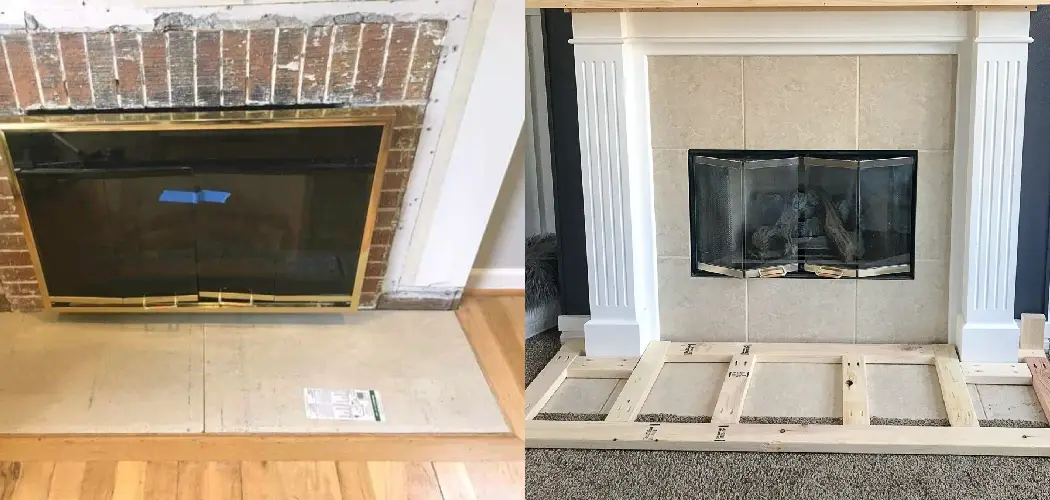If you are like many homeowners, you may enjoy spending time in your living room near the fireplace. A warm fire can make a cold winter evening much more comfortable. If you don’t have a fireplace, or if your current one needs repair, now is a great time to build one.
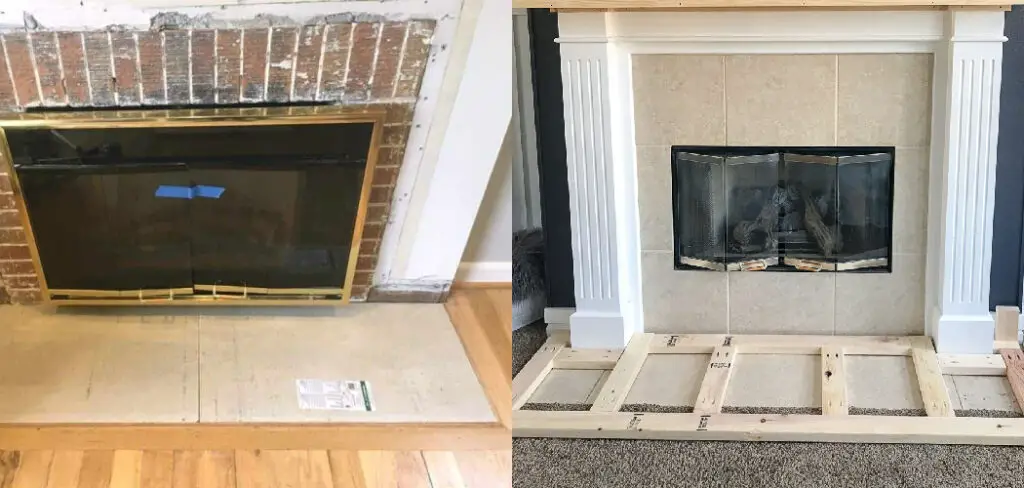
In this blog post, we will show you how to build a fireplace hearth pad. This is an important part of the fireplace that helps protect your floor from the heat and ashes of the fire. Let’s get started!
What Is a Fireplace Hearth Pad?
A fireplace hearth pad is a piece of fire-resistant material that is placed under a wood-burning stove or fireplace. The purpose of the hearth pad is to protect the floor and carpeting from the heat and sparks that can come from the fire. Hearth pads are typically made from concrete, brick, or stone, and they can be either flat or raised.
Raised hearth pads are often used in homes with young children, as they help to prevent burns. When choosing a hearth pad, selecting one that is the right size and shape for your particular fireplace or stove is important. In addition, be sure to choose a material that can withstand the heat of the fire.
Why Should You Build a Fireplace Hearth Pad?
A fireplace hearth pad is a must-have item for anyone who owns a wood-burning stove or fireplace. Not only does it provide a safe, stable surface for your stove or fireplace, but it also helps to protect your floor from heat damage. If you’re still on the fence about whether or not you need a hearth pad, here are a few more reasons to consider investing:
In addition to protecting your floors, a hearth pad can help insulate your home. By creating a barrier between your stove or fireplace and the rest of your home, you can help to prevent heat loss. This can be especially beneficial during the winter months when you’re trying to keep your home warm.
A hearth pad can also create a more polished look in your home. A sleek and stylish hearth pad can be an attractive solution if you’re tired of looking at an unsightly woodpile next to your fireplace. Many different designs and materials are available, so you’re sure to find one that fits your personal style.
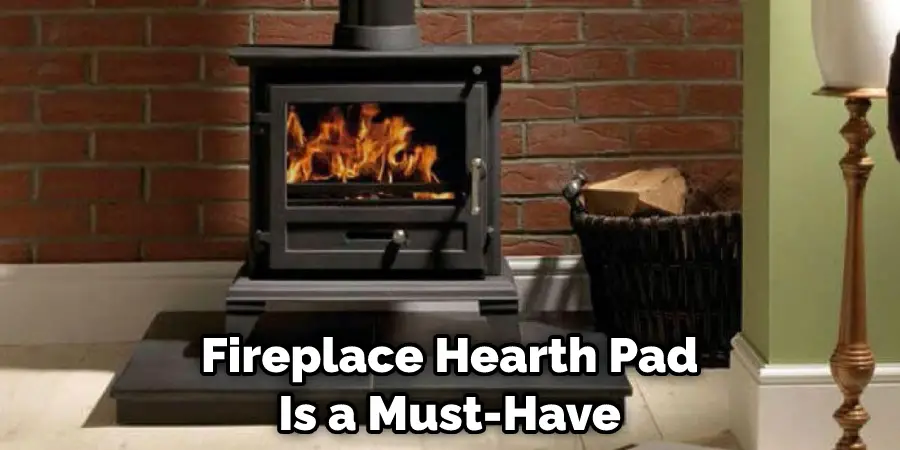
So, if you’re considering adding a wood-burning stove or fireplace to your home, be sure to purchase a hearth pad as well. Not only will it protect your floors and furniture, but it can also help improve your home’s look.
How to Build a Fireplace Hearth Pad Step-by-Step Guide
Step 1: Pick the Right Location
The first step is to find the perfect location for your hearth pad. It’s important to consider both the function and look of the fireplace when making this decision. For example, you might want to place your hearth pad in front of the fireplace so that it’s easy to access, but you also might want to consider how it will affect the room’s overall aesthetic.
Step 2: Choose the Right Materials
The next step is to select the right materials for your hearth pad. Again, various options are available, so it’s important to consider what will work best for your specific needs. For example, if you’re looking for a durable option, you might want to choose stone or brick. On the other hand, if you’re looking for a more budget-friendly option, you might want to opt for concrete.
Step 3: Measure the Area
Once you’ve selected the perfect location and material for your hearth pad, it’s time to measure the area where it will be placed. This will ensure that your hearth pad is the right size for the space.
Step 4: Cut the Materials
After you’ve measured the area, it’s time to cut the materials to size. If you’re using stone or brick, you’ll need to use a wet saw to make precise cuts. If you’re using concrete, you can simply use a shovel to scoop it into place.
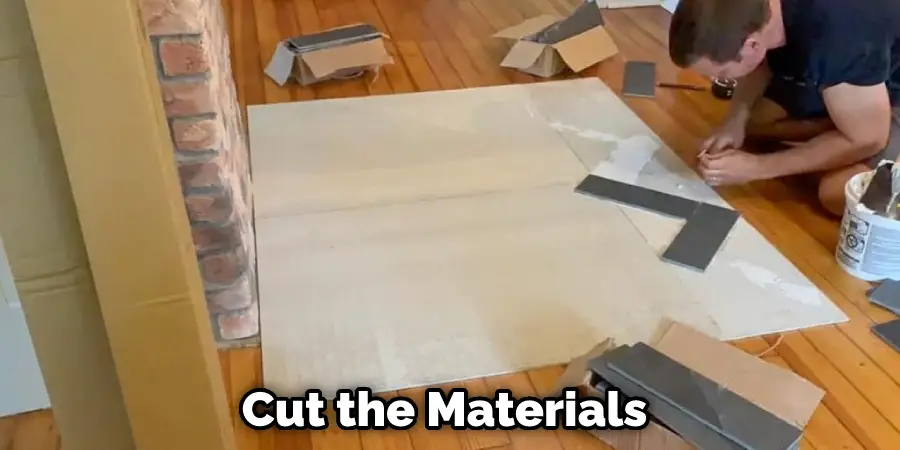
Step 5: Place the Materials
Once the materials are cut to size, it’s time to place them in the desired location. For stone or brick, you’ll need to use mortar to adhere them to the ground. For concrete, you can simply pour it into place.
Step 6: Tamp Down the Materials
After the materials are in place, it’s important to tamp them down so that they’re level and even. This will ensure that your hearth pad is safe and stable.
Step 7: Allow the Materials to Dry
Once you’ve placed and tamped down the materials, you must allow them to dry completely. This can take anywhere from 24 to 48 hours, depending on the material you used. Once the hearth pad is dry, you can enjoy using your fireplace!
That’s it! You’ve now learned how to build a fireplace hearth pad. Just follow these simple steps, and you’ll have a safe and stylish hearth pad in no time.
How to Choose the Right Hearth Pad for Your Fireplace
If you have a fireplace, chances are you’ll need a hearth pad. Not only do they add a decorative touch to your fireplace, but they also help to protect your floor from heat damage. But with so many different types and styles of hearth pads on the market, how can you choose the right one for your home? Here are a few things to keep in mind.
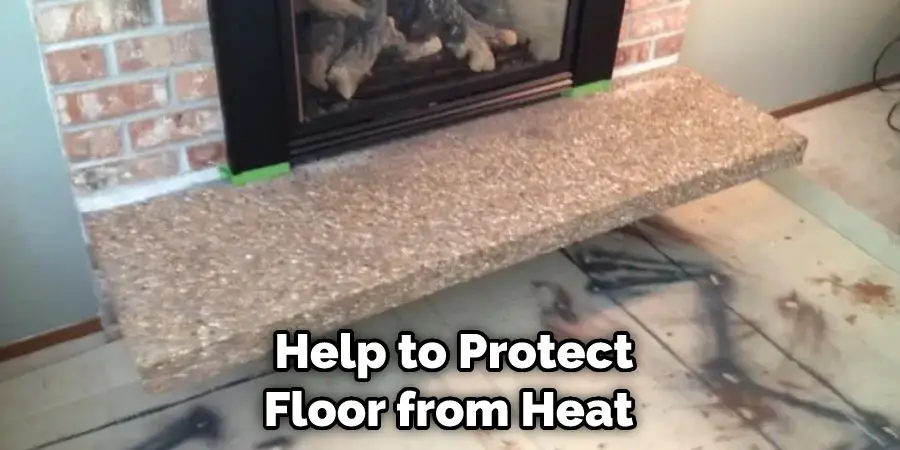
First, consider the size of your fireplace. You’ll want to ensure that the hearth pad is large enough to cover the entire opening. Second, think about the material. If you have a wood-burning fireplace, you’ll need a heat-resistant pad. Finally, take into account your personal style. Whether you’re looking for something classic or contemporary, a hearth pad is sure to be perfect for your home. With these factors in mind, choosing the right hearth pad for your fireplace is easy.
The Dos and Don’ts of Building a Hearth Pad
Building a hearth pad is a great way to add safety and style to your fireplace. But before you start shopping for brick and mortar, you should keep a few things in mind. First, your hearth pad should be at least 18 inches larger than your fireplace opening on all sides. This will help ensure that heat and sparks don’t damage your flooring. Second, make sure to use fire-resistant materials for your project. If you’re using bricks, for example, make sure they’re rated for high temperatures.
Third, take the time to seal all the joints in your hearth pad properly. This will help prevent fire and smoke from seeping into your home. And finally, don’t forget to consult with a professional before starting your project. A qualified contractor can help you choose the right materials and design a safe and stylish hearth pad that will last for years to come. Keep reading for more information about how to build a fireplace hearth pad.
How to Install a Hearth Pad in your Fireplace
Before you begin, ensure that the area around your fireplace is clear of any flammable materials. You will also need to have a straight edge, a tape measure, and a few tools on hand. The first step is to measure the area where you plan to install the hearth pad. Next, cut the pad to size using a straight edge and a utility knife.
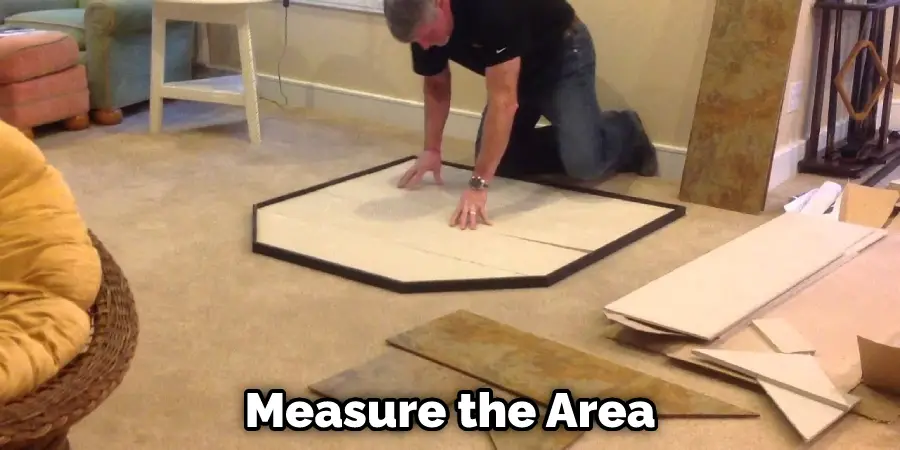
Once the pad is cut to size, apply a generous amount of construction adhesive to the back of the pad and press it firmly into place. For best results, use a roller to smooth out any air bubbles. Allow the adhesive to dry for 24 hours before using your fireplace. Following these simple steps will ensure that your new hearth pad is installed properly.
What Are the Dimensions of A Fireplace Hearth Pad?
The hearth pad is the flat area in front of the fireplace. It is also the area where you would place wood or coal to start a fire. The size and shape of a hearth pad will vary depending on your fireplace type. For example, a masonry fireplace will have a square or rectangular hearth pad, while a prefabricated fireplace will have a round or oval hearth pad.
The dimensions of a hearth pad also vary based on the manufacturer. However, the average dimensions of a hearth pad are 30 inches by 40 inches. The thickness of a hearth pad is typically between 1/2 inch and 1 inch. A thicker hearth pad can better withstand high temperatures and provide insulation for your floor.
Do You Need to Use Mortar for A Fireplace Hearth Pad?
A fireplace hearth pad is an important component of any fireplace, providing both a decorative surface and a protective barrier between the fire and the floor. When installing a hearth pad, mortar is often used to adhere the pad to the floor and provide added stability. However, mortar is not always necessary. In some cases, other adhesives can be used to secure the hearth pad in place.
For example, construction adhesive or double-sided tape can both be effective alternatives to mortar. Ultimately, the type of adhesive you use should be based on the size and weight of the hearth pad and the specific requirements of your installation. With careful planning and a little bit of research, you can ensure that your fireplace hearth pad is securely in place.
Conclusion
If you’re thinking of building a hearth pad, follow these simple steps for a safe and successful project. Thanks for reading our post about how to build a fireplace hearth pad. Have you ever built a hearth pad before? What tips would you add to this list? Share your advice in the comments below!

